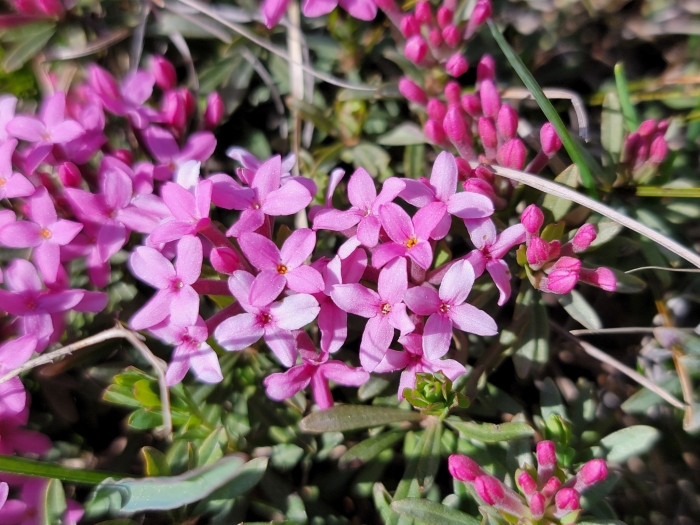Garland Flower
(Daphne cneorum)
Garland Flower (Daphne cneorum)
/
/

Elias
CC BY 4.0
Image By:
Elias
Recorded By:
Copyright:
CC BY 4.0
Copyright Notice:
Photo by: Elias | License Type: CC BY 4.0 | License URL: http://creativecommons.org/licenses/by/4.0/ | Rights Holder: Elias | Publisher: iNaturalist | Date Created: 2022-04-24T14:03:15-07:00 |

























Estimated Native Range
Summary
Daphne cneorum, commonly known as Garland Flower, is a prostrate evergreen shrub native to the mountainous regions and rocky hillsides of central and southern Europe, including the Alps and the Apennines. It typically grows up to 8 inches (20 cm) tall and spreads to form mats that can reach several feet in width. The plant is characterized by its glossy, narrow leaves and clusters of fragrant, deep pink to rose-purple flowers that bloom profusely in spring, providing a showy display. The flowers are followed by small, red berries that are attractive but toxic.
Garland Flower is valued for its sweetly scented flowers and low-growing, mat-forming habit, making it an excellent choice for rock gardens, alpine gardens, and as ground cover in well-drained, sunny locations. It prefers well-lit areas with rocky, calcareous soils and requires good drainage to thrive. While it is generally low-maintenance, it is susceptible to root rot in poorly drained soils and can be affected by diseases such as Daphne sudden death syndrome and Daphne virus X. Care should be taken when handling this plant, as all parts are poisonous if ingested.CC BY-SA 4.0
Garland Flower is valued for its sweetly scented flowers and low-growing, mat-forming habit, making it an excellent choice for rock gardens, alpine gardens, and as ground cover in well-drained, sunny locations. It prefers well-lit areas with rocky, calcareous soils and requires good drainage to thrive. While it is generally low-maintenance, it is susceptible to root rot in poorly drained soils and can be affected by diseases such as Daphne sudden death syndrome and Daphne virus X. Care should be taken when handling this plant, as all parts are poisonous if ingested.CC BY-SA 4.0
Plant Description
- Plant Type: Shrub
- Height: 0.5-1 feet
- Width: 2-3 feet
- Growth Rate: Slow
- Flower Color: Pink, White
- Flowering Season: Spring
- Leaf Retention: Evergreen
Growth Requirements
- Sun: Full Sun, Part Shade
- Water: Medium
- Drainage: Fast, Medium
Common Uses
Border Plant, Fragrant, Groundcover, Rock Garden, Showy Flowers
Natural Habitat
Mountainous regions and rocky hillsides in central and southern Europe
Other Names
Common Names: Cliff Daphne , Rosmarin-Seidelbast , Rose Daphne
Scientific Names: Daphne cneorum , Daphne bellojocensis , Daphne cneorum f. arbusculoides , Daphne cneorum f. major , Daphne cneorum subsp. arbusculoides , Daphne cneorum subsp. canescens , Daphne cneorum subsp. julia , Daphne cneorum subsp. juliae , Daphne cneorum subsp. verlotii , Daphne cneorum subsp. verlotii
GBIF Accepted Name: